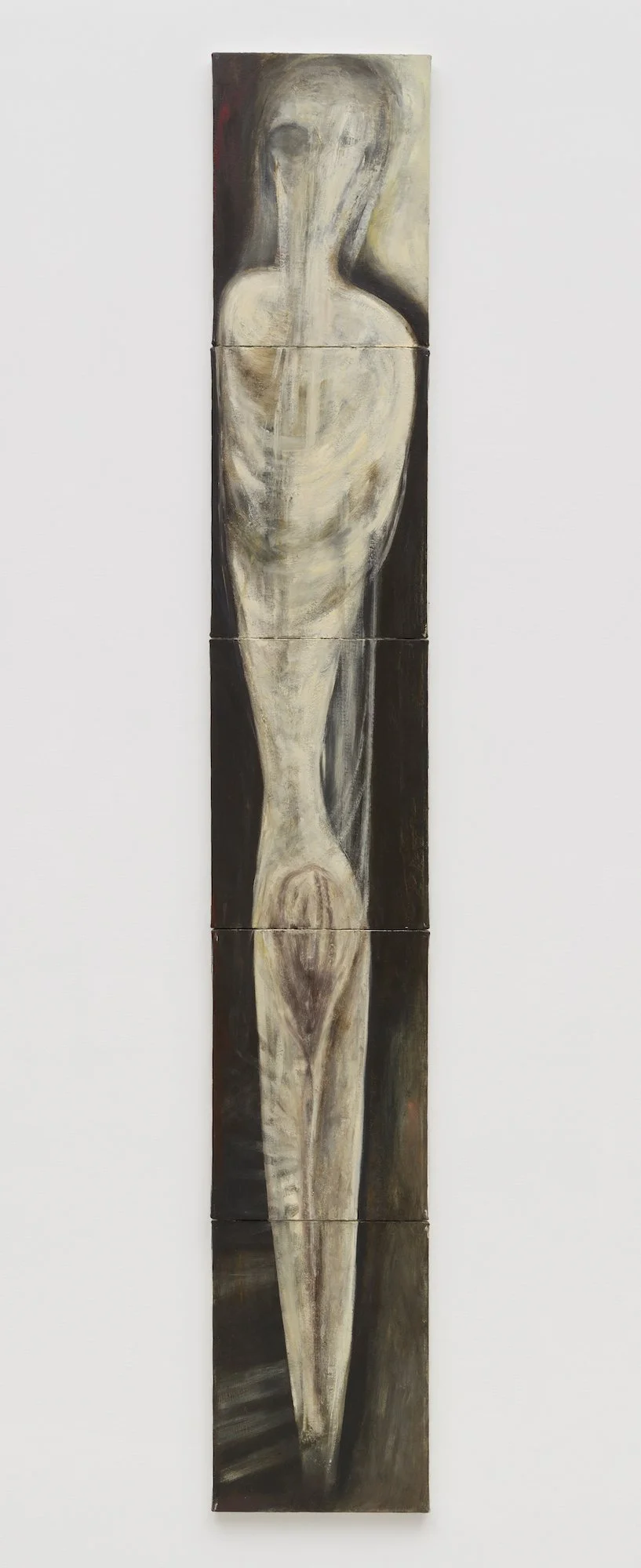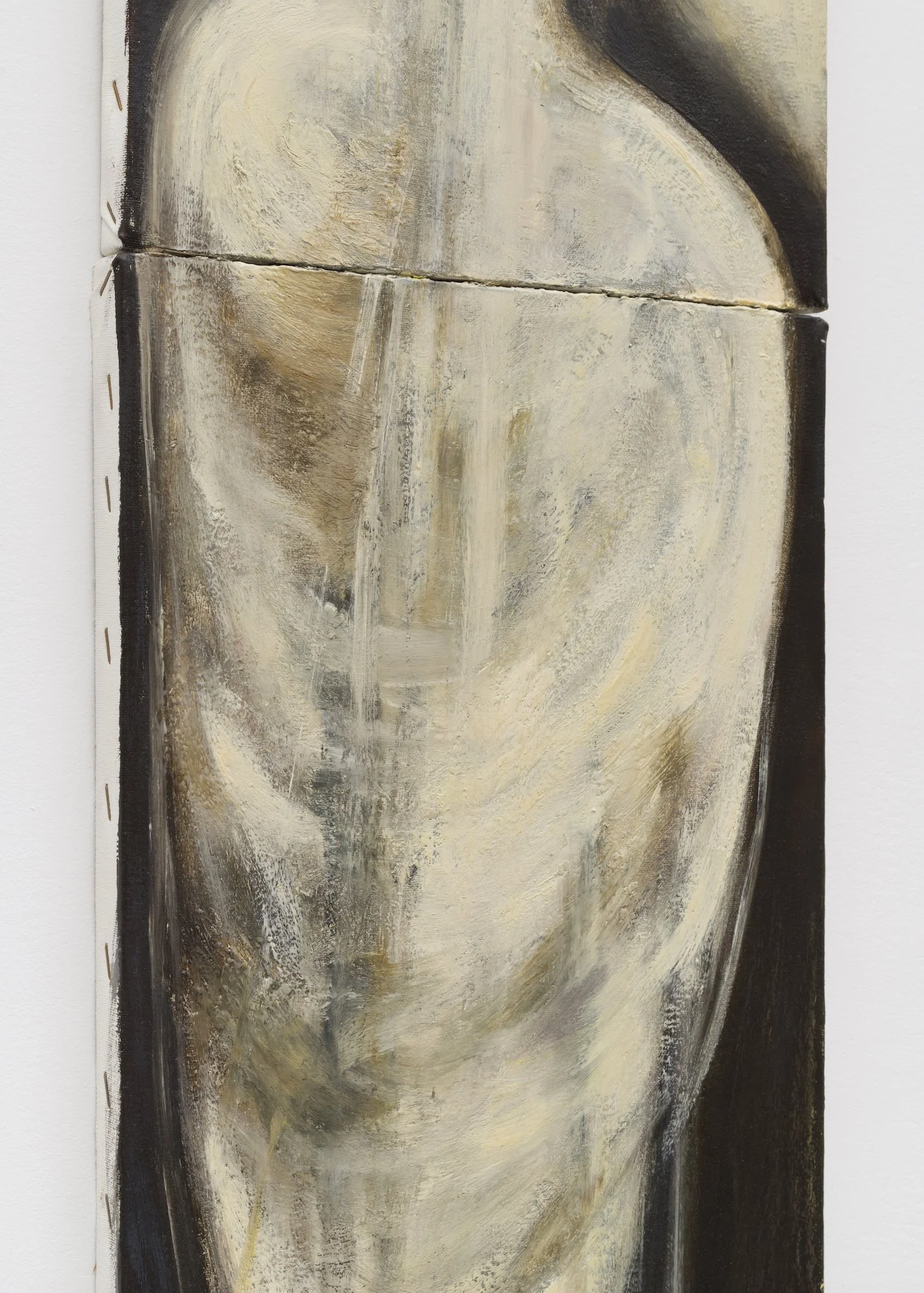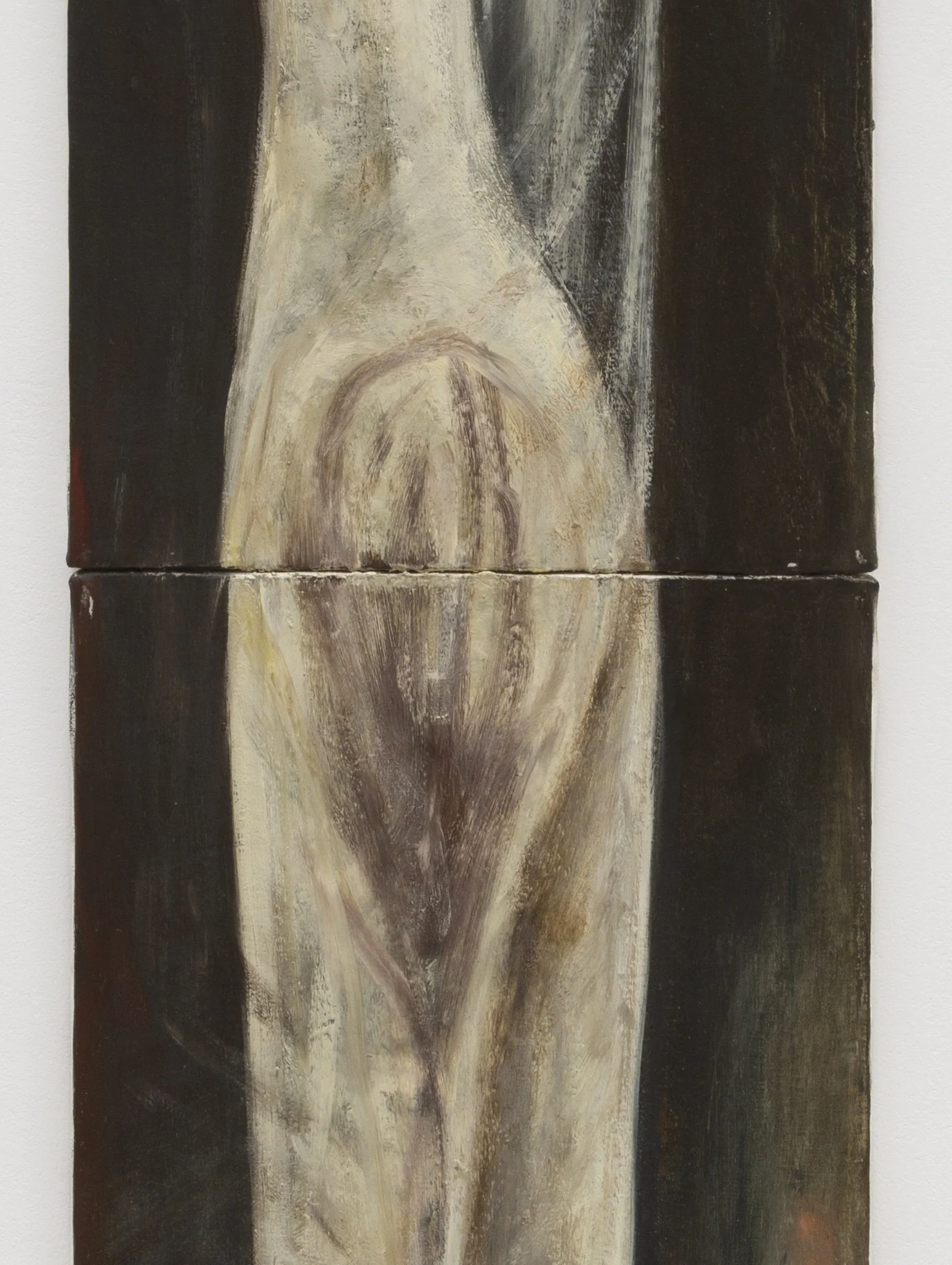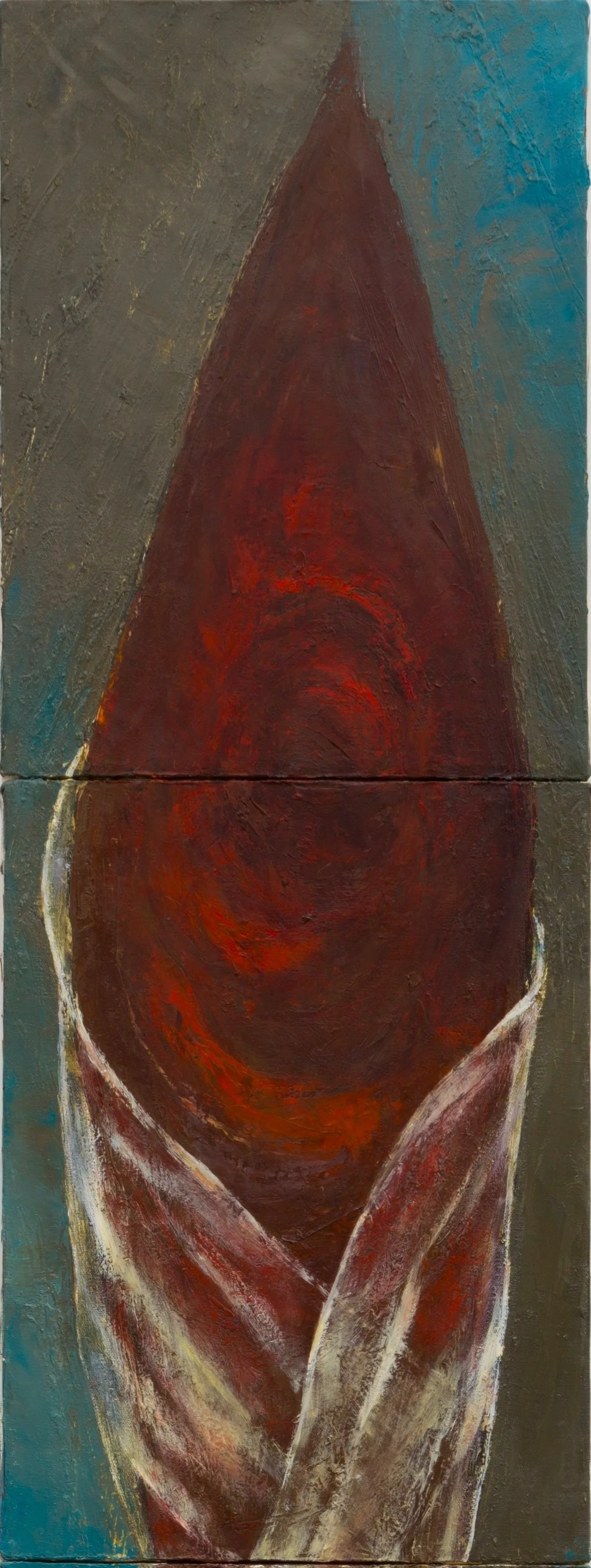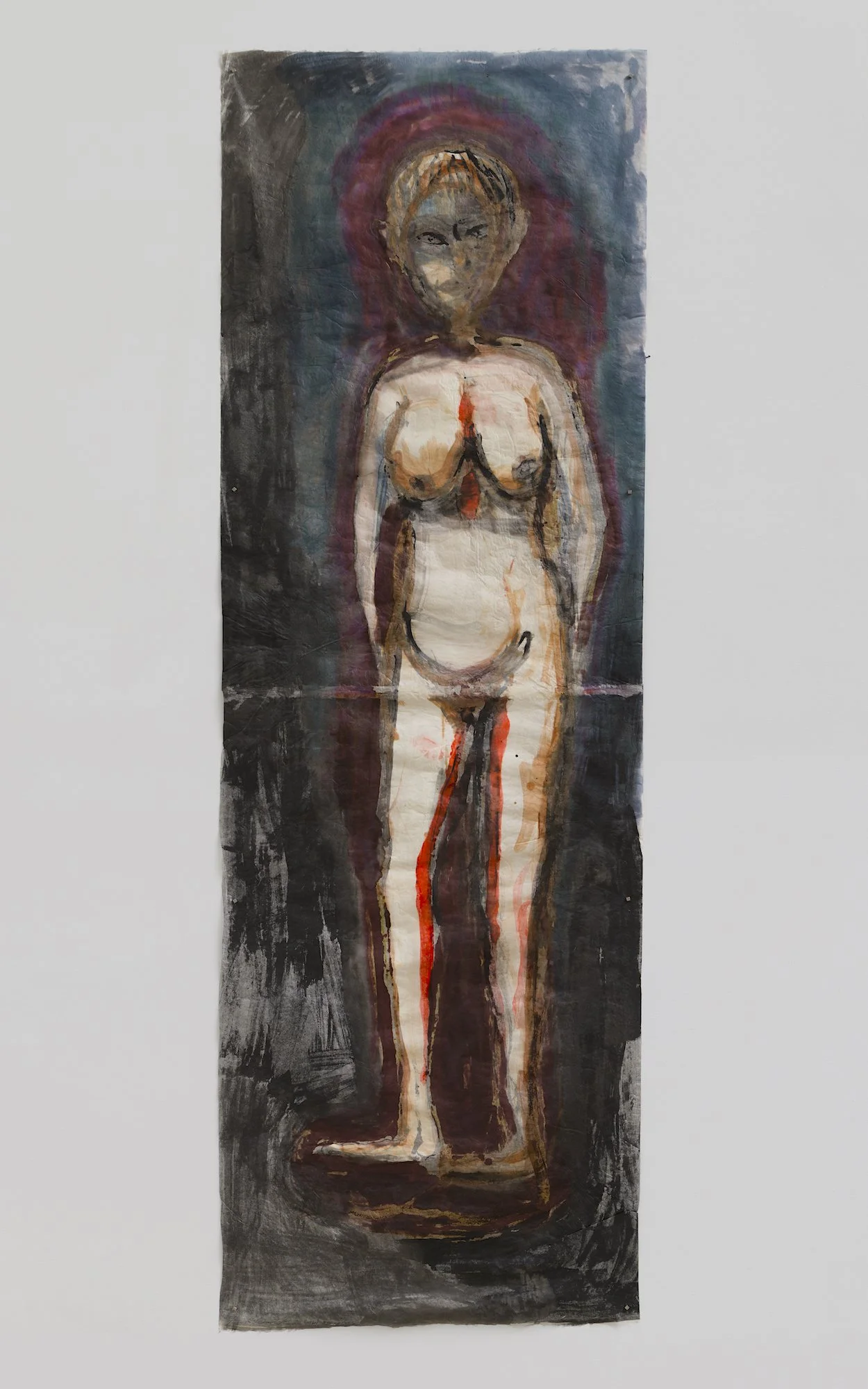
Project:
Mira Schor, Nuns
January 17- February 22
Mira Schor
The Nun, 1986
Oil on five canvases
80 x 12 inches, 203.2 x 30.5 cm
Mira Schor's exhibition Nuns presents three works portraying the figure in states of radical transformation. Fish in a Dress (1985) and The Nun (1986) stand among the most significant works from the first years of Schor's engagement with oil on canvas. Fish in a Dress demonstrates the little remarked upon but significant influence of female surrealist visual language in her oeuvre. The use of the fish as a stand-in for the female body, combined with the wide gaping eye (or perhaps mouth) of the crimson figure wrapped in a diaphanous ivory dress, expands upon her complex expression of bodily transformation and psychological states. The Nun, with its distorted figure and raw emotional presence, conjures relationships with Francis Bacon's contorted portraits and Miriam Cahn's existential explorations of the human form through its similar emphasis on corporeal vulnerability and psychological tension.
Mira Schor, The Nun, 1986 (Detail Views)
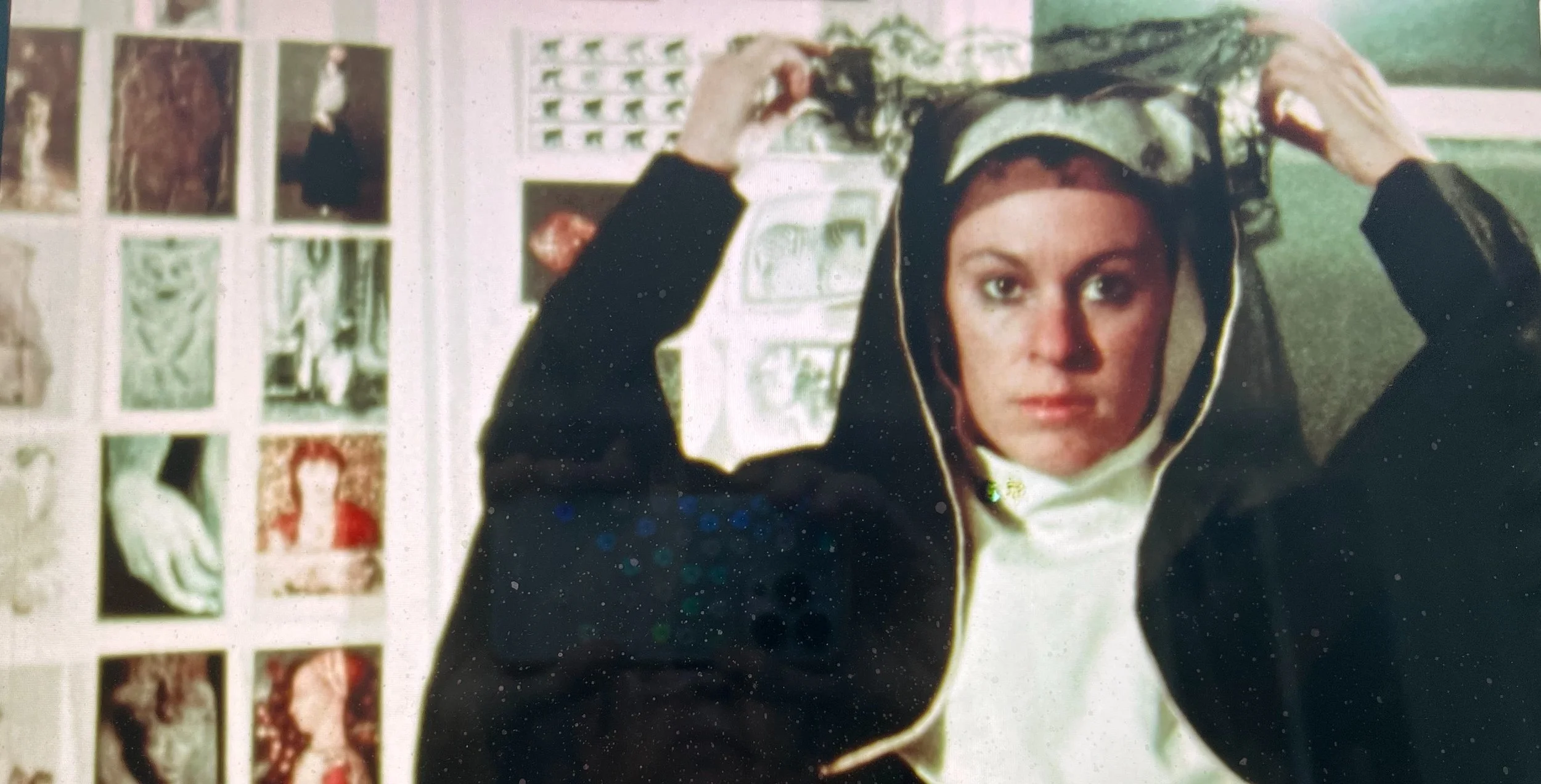
On the typescript of lectures notes I composed in the early 1980s, I wrote that my goal was “to develop a female figure sexual without being available.” I also wrote “I am drawn to the icon which is centered, totemic, narcissistic and sacrificial, phallic and matriarchal rather than to the competitive patricide of iconoclasm. The art world that I live in values the latter.” The work “begins with the figure, is refound in nature—trees, stones, sand flats and skate egg cases – which reflects back into the figure. I have tried by subject, form and material to create a female presence that comments on “femininity,” a notion that I find intriguing, elusive, alien and oppressive.”
In my childhood the building next door to mine was a convent school, and in the 1950s the nuns wore full traditional robes. Always walking in small groups, never alone, they were notable and fascinating. Gradually their attire modernized. By the time I was a teenager they wore the same basic uniform my private school required: grey skirt, navy blue sweater, white blouse and small wimple head covering. In later years, unmarried, childless, and dedicated to my work as the trace I would leave of myself, I sometimes joked that I was a nun for art.
The most recent work of this triad of figures is what is left of all that drama about what it means to live in a female body, when you awake in a darkened room from open heart surgery, no more uniforms and identities beyond the most basic human condition of being in a body.
—Mira Schor, notes on Nuns, January 12, 2025
Mira Schor
Fish in a Dress, 1985
Oil on five canvases
80 x 12 inches, 203.2 x 30.5 cm
Mira Schor, Fish in a Dress, 1985 (Detail Views)
The Self (2024) exhibits Schor's continued confrontation with mortality and the aging female body. In this unflinching self-portrait, her chest is cleaved by a red gash as she stares forward with a direct and inscrutable gaze. Through all three works, Schor represents the body with visceral materiality and deep psychological charge, creating a through-line that spans nearly four decades of her artistic practice.
Mira Schor
The Self (Provincetown, July 1, 2024), 2024
Ink and gesso on Gampi rice paper
74 x 24 1/4 inches, 188 x 61.6 cm
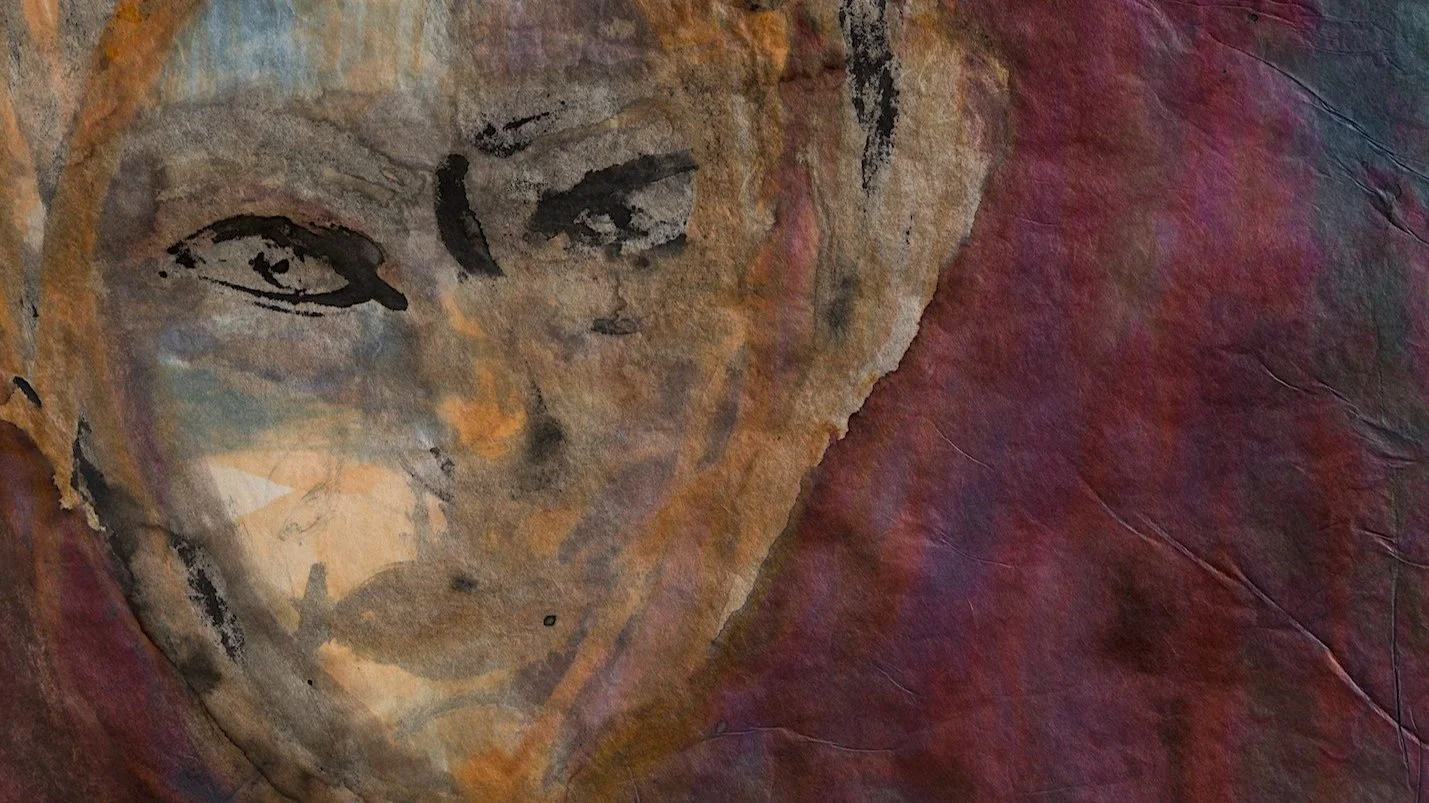
Mira Schor, The Self (Provincetown, July 1, 2024), 2024 (Detail Views)


